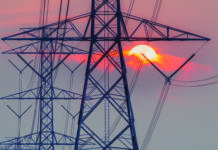The economics of solar power generation and of clean electricity storage have taken yet another leap forwards out of universities and into commercial deployment.
University spin-off Oxford Perovskite – Oxford PV – has announced its newly converted €44 million factory in Brandenburg, near Berlin is now in its fitting-out phase, set to produce later this year perovskite-silicon modules with a world-beating efficiency of 28%.
The firm has 35%-efficient multi-layered modules in development, and claims panels of 83% efficiencies are possible in theory.
Even at the lower efficiencies, the firm reckons its new German base can make 125MW of perovskite-enhanced panels in its first year, scaling to over a Gigawatt by 2024.
Those numbers are a step-change beyond the 18% to 21% operating efficiencies of leading monosilicon-based solar panels now available.
Perovskites are a naturally occurring, widely available family of crystals which have enhanced light-capturing properties; as recently as 2010 they were deemed too unstable for commercial use. Applied now to silicon-based solar cells in a layer less than one micron thick, in two decades they have brought electricity-from-light conversion rates up from less than 4% to over 25%.
Meanwhile power storage within batteries may soon see costs axed by factors of up to 100, as Australian start-up Allegro Energy lodges patents for a non-toxic microemulsion electrolyte.
The electrolyte in any battery is the material which permits electrically charged ions to pass between its anode and cathode.
Most electrolytes are either solvent-based – expensive and usually toxic when degrading- or else water-based and limited to 1.23V conversion, above which they disintegrate into oxygen and hydrogen.
At the University of Newcastle in New South Wales, a team led by Prof. Thomas Nann created a micro-emulsion of both water-based and solvent elements. They were “blown away” by how well and how stably the new electrolyte behaves, Professor Nann told PV Australia magazine.
Stable at high temperatures, the micro-emulsion electrolytes also permit ion transfer beyond that 1.23V barrier. They are also simple and extremely cheap to make, with minimal carbon input.
Professor Nann’s Allegro Energy is now targeting supercapacitors, power storage devices where no chemical reaction takes place. 70% of a supercapacitor’s unit costs comes from its chosen electrolyte; as Nann told the journal: “One litre of the current electrolyte costs about $10: ours costs 10 cents.
“So it’s a factor of 100 cheaper”.



